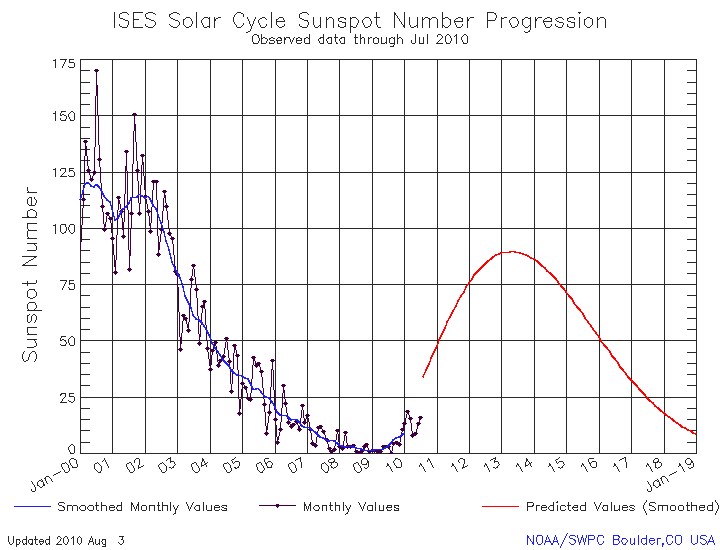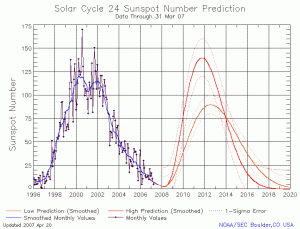SOHO latest image:
Last Friday the German edition RIA NOVOSTI Russian news agency reported that there were five clusters of sunspots on the sun, leading some scientists to believe that the sun’s unusual lull may be over for good.
Scientists have been observing sunspots for hundreds of years. Many believe solar activity has a major impact on the earth’s climate on a decadal scale.
As a rule, the number of sunspots is considered to be the main criteria for solar activity: the higher the number of sunspots, the higher the activity.
But Sergei Bogatchov of the Lebedev Physics Institute of the Russian Academy of Sciences says that this correlation is not exact. Over the last 10 years, the highest number of sunspots occurred on January 24, 2002 – 19 clusters of spots were registered. Yet these sunspots led to only three weak solar eruptions. The most powerful solar eruption in recent history occurred on November 4, 2003 when only 4 clusters were present on the sun, reports Ria Novosti.
Last February there were 22 eruptions – 4 were powerful. Since then the sun has been in a stupor. According to Bogatchov the current sunspots show very little energy. Today’s sun image, see above, is again relatively inactive.
When will this solar cycle reach it’s maximum?
Ria Novosti writes that according to Bogatchov, this cycle’s maximum was already pushed back to mid 2013 earlier this year, meaning the cycle is extended from 11 to 12 years. Bogatchov says:
If nothing happens in the next months ahead, then the expected maximum will have to be pushed back once again.
Source: http://www.swpc.noaa.gov/SolarCycle/
Judging NOAA’s latest sunspot tracking chart above, pushing back the date of the expected peak will likely happen sooner than later, and the length of the current cycle will be thus extended well beyond 12 years. Compare it to their original prediction back in 2007:
Now that’s quite a difference. We were projected to be at about 100 by now. But we’re only at about 20, well below their low projection! Scientists and policymakers really ought to start taking notice, as the chances that they are planning for the completely wrong scenario are becoming inescapable.
Recent studies have shown that Europe’s winters are especially harsh when solar activity is low. If that holds, get ready for some tough winters ahead. Last winter may have been just a preview of what’s coming. Stay tuned for more details on this elsewhere!







I’m thinking 2014 and lower.
Who’s running the book? 🙂
I already put in my bet of a max of less than 50 in late-2015/early-2016.
But I hope for more, sooner.
The quickest (smoothed) rise from present to above 50 has taken about 2 or 3 years. But that rate of increase is usually between short cycles, not the longer ones such as we appear to be experiencing.
The green corona brightness tells us that solar maximum will be in 2015, halfway through a 12 year cycle.
In just another four months, we will be able to put a shape-fitting projection on the solar activity to the activity to that date.
What would it do to the shape-fitting projection if the sun were more or less dormant for the next 4 -12 months? I’d say the cards would then be completely reshuffled and that we’d be looking at something many of us have not experienced in our lifetimes. This to me is the suspenseful element of the story.